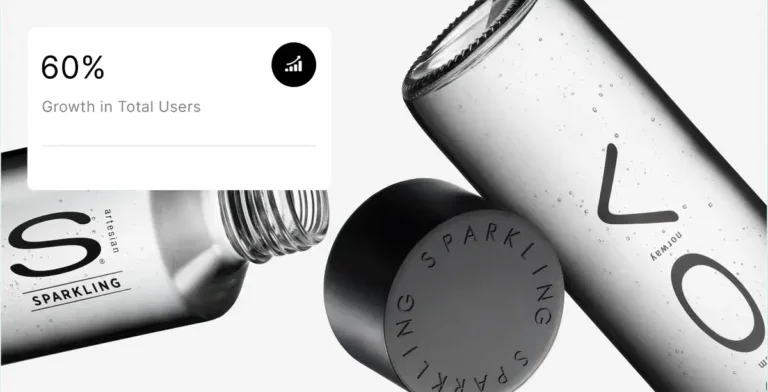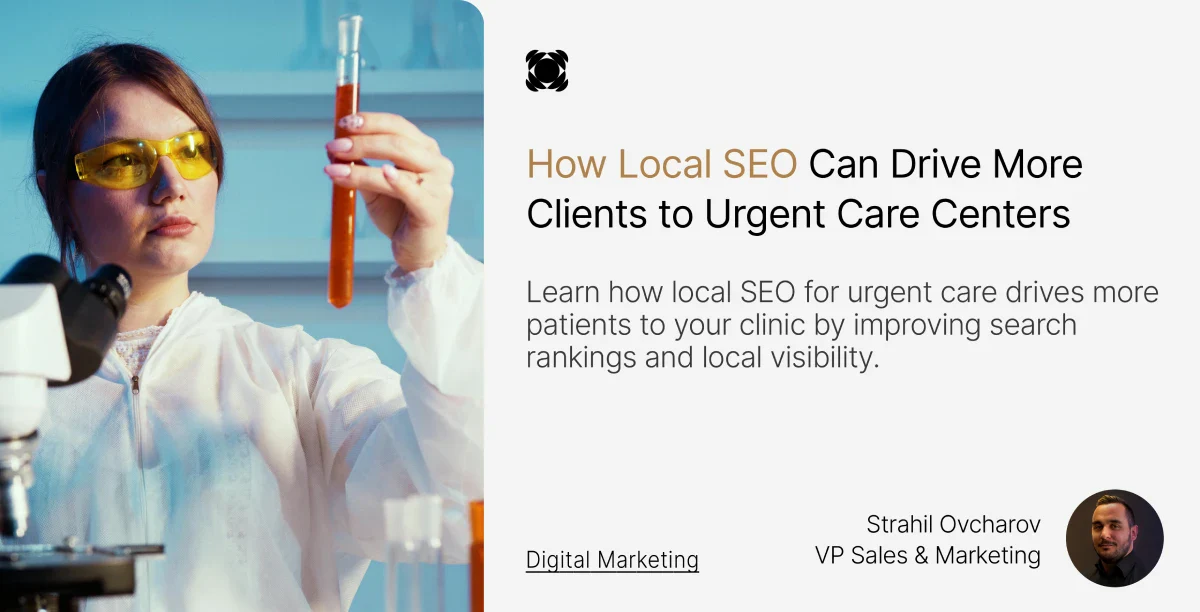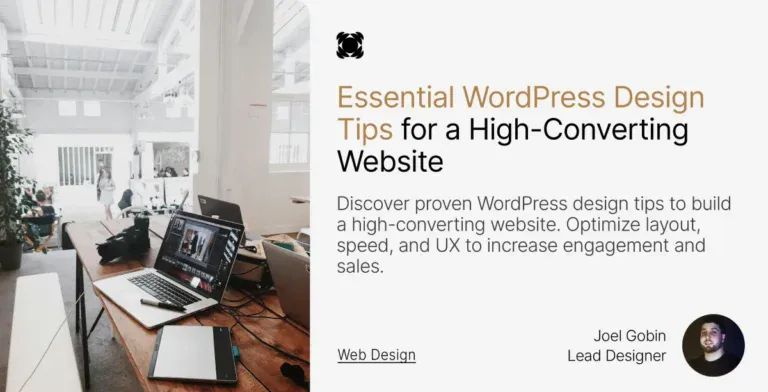Did you know that 86% of people look up the location of an urgent care center on Google Maps?
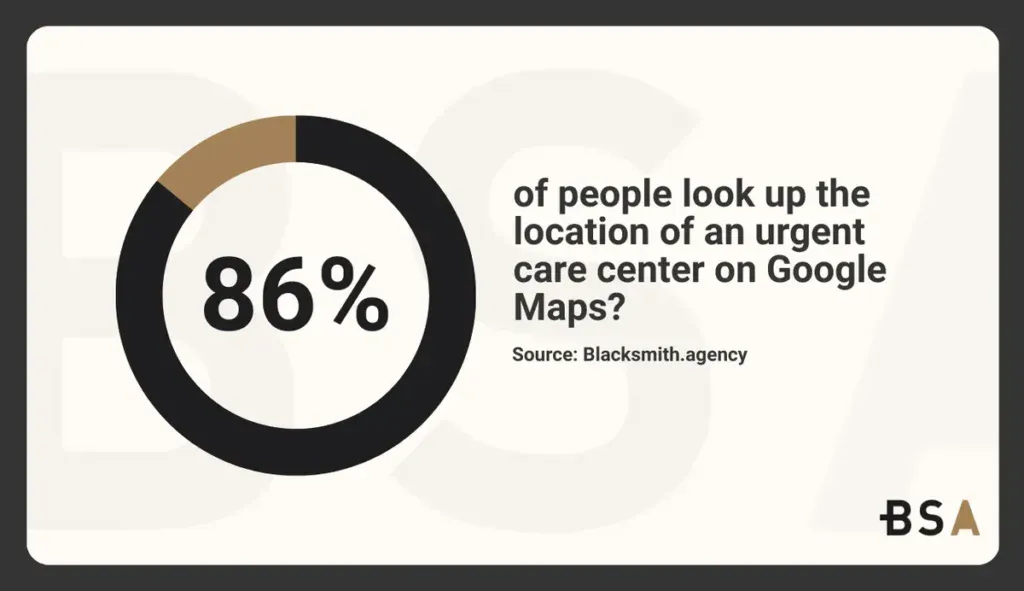
Local SEO plays a vital role for urgent care centers today. Patient behavior has shifted significantly. Mobile searches with “near me” have jumped 500% in the last several years.
This shift has altered the map of how people connect with patient-centric healthcare providers. Your clinic needs to rank at the top of Google Maps results. It’s the quickest way to bring local patients through your doors.
Picture this: A patient needs urgent medical care. They lack time to compare multiple options and simply want a well-rated clinic close by. Your online presence directly affects how these potential patients find your services.
Strong website SEO best practices directs patients to your facility, a significant advantage in competitive markets.
Most patients prefer local providers they can trust and reach easily. Your visibility in local search results becomes critical at the moment they need care.
The goal extends beyond reaching a broad audience. A local parent might search for “urgent care open now” at 10 PM. Your practice should appear prominently as a trusted and available option.
This piece will help you optimize your urgent care center for local search. You’ll learn to create targeted content, build trust through reviews, improve mobile experience, and track your success.
Trying to improve your local SEO but don’t know where to start? Let us help.
How to set up your Urgent Care for Local Search Success?
Your urgent care center’s success depends on how easily patients can find you through local searches.
A strong online presence isn’t optional anymore; local SEO is essential to attract new patients.
Why local SEO matters for urgent care centers
Urgent care is all about location. Patients with health concerns want the closest trusted option they can find. The way people search for healthcare has changed. People now reach for their phones when they need medical care and look for quality options nearby.
Location matters more for urgent care centers than for most businesses. Your competitors will get the walk-in patients if you don’t show up in local search results.
This creates a direct connection between your search ranking and the number of patients you see.
Local SEO works differently from traditional optimization for urgent care facilities. Traditional SEO targets a national audience, while local SEO focuses on people in your area.
Claim and optimize your Google Business Profile
Your Google Business Profile serves as your digital storefront. It’s often the first thing potential patients see. Clinics with complete profiles get 5x more views than those with missing information. The first step is to claim your profile at business.google.com.
Choose “urgent care center” as your business category and add your clinic’s details.
Google will need to verify your business. They usually send a postcard with a verification code to your address. The process takes 5-14 days, though some clinics can verify faster through phone, email or video.
After verification, focus on these key elements:
- Add accurate operating hours, including holiday schedules.
- Upload high-quality photos of your facility’s exterior, waiting areas, and treatment rooms.
- Write a detailed business description (under 750 characters) that highlights key services and accepted insurance plans.
- Select appropriate service categories, such as “Blood testing” or “X-ray services.”
Keep your profile active with Google Posts about health tips, service announcements, and special hours. This helps maintain your visibility in search results and shows patients you’re engaged.
Ensure consistent NAP across directories
NAP (Name, Address, Phone number) consistency creates the foundation of your local search presence.
Think of NAP as your clinic’s digital fingerprint that helps search engines confirm you’re legitimate. Your urgent care center’s information should be similar everywhere online.
Small differences like “Street” versus “St.” or different phone number formats can confuse both search engines and patients.
Wrong NAP information hurts your search rankings and patient trust. About 60% of patients click on Google Business Profiles in search results, so accuracy really matters.
Check your online listings regularly to maintain consistency. Look at your information on Google Business Profile, healthcare directories, and review sites.
Citation management tools help spot differences quickly so that patients always find the right information about your clinic.
This rule applies to every online mention, your website, Google Business Profile, Yelp, social media profiles, and healthcare-specific directories. Patients quickly switch to competitors when they find incorrect contact details, which affect your revenue directly.
Create Content that Matches Patient Intent
Effective urgent care SEO depends on your understanding of what patients search for online. Your content must line up with how potential patients look for medical services during critical moments.
Separate emergency and scheduled care keywords
Medical urgency dramatically changes how patients search online. Patients use emergency-focused keywords with immediate intent when they face serious health concerns like chest pain or severe bleeding.
Patients searching for minor ailments like sore throats or routine vaccines usually plan their visits days in advance.
Your content strategy should reflect this key difference. Patients who need immediate attention typically search for phrases like “urgent care near me” or “walk-in clinic open now.”
Those who plan ahead use terms like “flu shot appointment” or “physical exam clinic.”

Your content pathways should cater to these different search intentions.
Emergency pages need to highlight location, hours, and insurance details that patients can access quickly. Pages for scheduled visits can offer more detailed educational content and service information.
Write blog posts that answer common health questions
Urgent care centers can use blog content to educate patients and boost search rankings simultaneously. Your informative articles should address common medical concerns, provide treatment explanations, and share illness prevention tips.
The first step is to identify questions your patients frequently ask about your services.
Articles like “When to visit urgent care vs. emergency room” or “How to know if you need stitches” help address patient concerns directly. These educational posts help build trust and show your clinic’s expertise in immediate care.
Fresh blog content keeps your website active and brings patients back when they need health information.
These posts naturally incorporate service-related keywords without seeming promotional or forced.
Use location-based landing pages for each clinic
Multi-location urgent care centers must create dedicated location pages to succeed in local search.
Each facility needs its own unique page with at least 500 words of original content.
These pages must include:
- Complete name, address, and phone details (matching your Google profile exactly).
- Embedded Google Maps show precise location.
- Location-specific descriptions mention nearby landmarks.
- Staff information for that specific clinic.
- Services offered at that location.
- Clear calls-to-action for appointments or directions.
Geographic identifiers in URL structure (city/neighborhood names) help optimize each page. Search engines can quickly recognize geographic relevance, which improves your visibility in map results.
Your clinic becomes more visible to potential patients at crucial moments by creating content that matches their various ways of searching for urgent care services.
Build Authority with Backlinks and Reviews
Quality backlinks and positive patient reviews help build your online authority.
Search engines use these elements to determine if your urgent care center deserves top spots in local results.
Earn links from local health organizations
Your urgent care center’s visibility in search results gets a substantial boost from backlinks via reputable local partners. Build relationships with health-related organizations nearby.
Local pharmacies, fitness centers, and health food stores make great partners when you exchange guest blog posts or mention services on their websites.
Your medical expertise could benefit local health blogs or news outlets.
To cite an instance, during health crises like COVID-19, your physicians can share expert commentary. This often leads to backlinks when they’re quoted as sources.
These strategic collaborations tell search engines that local establishments trust your services.
Explore how we increased GeminiBio’s organic reach by 22% with a custom SEO strategy in our latest case study.
Sponsor community events for exposure
Urgent care centers can create valuable backlink opportunities through community sponsorships.
Many centers find success when they sponsor local sports teams, health fairs, and charity events. These activities generate quality backlinks and boost brand awareness at the same time.
Ask for reviews via email or SMS
Potential patients trust online reviews as much as personal recommendations. This makes online reviews crucial for patient decisions. A well-planned review request system helps grow your positive reviews naturally.
Send follow-up emails or texts with direct links to your Google Business Profile after visits. Here’s what works best:
- Time your requests right. Soon after positive experiences.
- Direct links make leaving reviews simple.
- Customize requests for patients who had great experiences.
Email campaigns work well for most clinics. You can run monthly campaigns for all patients or reach out to new patients specifically.
Patient engagement software that sends automatic review requests has proven successful for many practices.
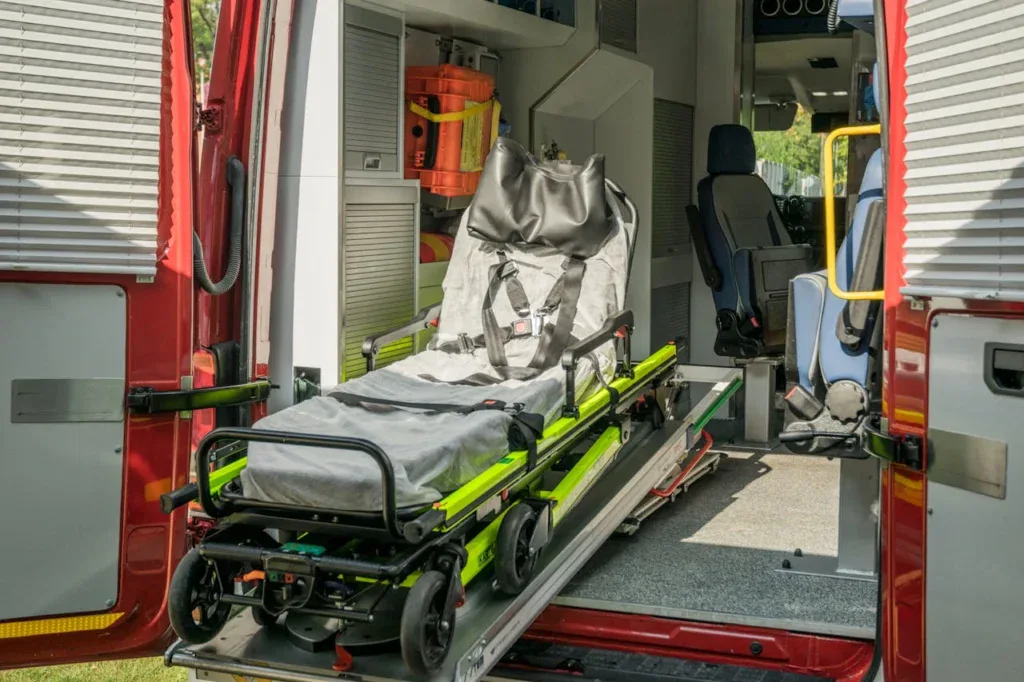
Respond to reviews to show engagement
Your responses to patient reviews show how much you value patient satisfaction. A simple thank you works well for positive reviews. Negative reviews need an even more careful response strategy.
Always start with an apology when responding to negative reviews. This shows empathy and tells future patients that you take concerns seriously. Welcome all reviews.
Boost Your Website With Mobile and Local Users
Your website is the digital gateway to your practice. 88% of consumers who look up local businesses on their phones end up visiting or calling within 24 hours. Mobile searches have become standard practice for urgent care services.
Build a mobile-friendly and quick site
Your urgent care website should adapt seamlessly to any screen size through responsive design.
Patients won’t wait around; 53% leave websites that need more than three seconds to load. They’ll simply switch to your competitors if your pages are slow.
Speed up your site by compressing images while maintaining quality.
Minimize code and use browser caching effectively. Urgent care websites need large, easy-to-tap buttons. This makes booking appointments and finding contact details simple, especially during stressful moments.
Mobile optimization determines your search rankings. Google ranks websites based on their mobile versions first. A better mobile experience leads to more patients finding your practice.
Include schema markup for services and hours
Schema markup helps search engines better understand your content through structured data.
Urgent care centers should use MedicalBusiness and MedicalClinic schemas to show up more in local searches.
This code tells search engines about your services, location, and hours in an easy-to-process format.
Schema markup appears in the vast majority of the top 10 Google results. And pages with schema-driven rich results usually get more clicks than those without.
Your urgent care center needs these schema types:
- HealthcareService (detailing specific services offered)
- MedicalOrganization (providing organization details)
- LocalBusiness (enhancing local search presence)
Create clear CTAs for appointments and directions
Patients should find maps, contact information, and appointment booking with a single tap. Make directions and booking stand out with prominent buttons in contrasting colors. Simple labels like “Book Now” or “Get Directions” work best.
Design buttons that work well on mobile. They should be large enough to tap easily.
Place these elements at the top of your page. This lets patients take action without scrolling and increases conversion rates.
Click-to-call features let patients reach your clinic right away. This simple function turns online searches into actual visits by connecting digital traffic to physical care.
Learn how we increased Arc of Northern Virginia’s organic traffic by 19% with a custom SEO strategy in our recent case study.
Measure What Works and Improve Over Time
Your urgent care marketing needs constant measurement and refinement.
Performance metrics give you clear direction and help you identify which tactics actually bring more patients through your doors.
Track conversions from local search
Raw traffic numbers tell only part of the story. The real measure of success is how many website visitors become actual patients. A proper conversion tracking setup helps measure calls from ads, online check-ins, and appointment bookings.
Google Analytics and Google Search Console do more than just count page views; they show which search terms bring patient traffic.
Your website needs conversion tracking to collect data about phone calls, leads, and appointment bookings that come from your SEO efforts.
Use heatmaps and behavior tools
Heatmaps show where users click, scroll, or ignore on your website. These visual tools work like weather radar for visitor attention.
Tools like Hotjar or Microsoft Clarity reveal exactly how visitors use your site. Click maps highlight what patients interact with, while scroll maps display how far they read.
Visitor recordings let you watch real browsing sessions. This evidence helps you spot if important elements like “Book Now” buttons remain hidden.
Refresh content based on performance
Analytics show which pages attract potential patients and which ones need work. Your website needs regular audits to find content worth expanding and pages that need updates.
Service pages, location details, and provider profiles deserve the most attention, patients look for these most often.
Minor changes aren’t enough; search engines want to see real value added to content. Search engines need several months to index changes properly, so wait before making more updates.
Adjust keyword strategy as trends change
Patient behaviors and search trends keep evolving, so your keyword strategy must adapt. Google Analytics and Search Console help track how current keywords perform.
Look for terms that bring traffic and fix the ones that don’t work well. Local relevance matters.
Use keywords that match the areas you serve. Your competitors’ keyword choices can teach you about new trends worth adding to your strategy.
Get a Custom Local SEO Strategy for Your Urgent Care Center With Blacksmith
Local SEO can transform how urgent care centers connect with patients during crucial moments.
Your digital presence determines whether patients will choose your facility in times of medical need. Better search rankings lead to fuller waiting rooms and more lives you can help.
Applying a proper local SEO strategy for your urgent care center isn’t a weekly project; in fact, it’s not even a month-long project. This is an endeavor that will take months of consistent research and work.
This is time you could be using for other aspects of your urgent care center. So what now?
That’s where we come in. Blacksmith is an award-winning SEO agency with a group of seasoned SEO professionals ready to create the perfect local SEO strategy for your urgent care center.
We will ensure your custom local SEO strategy is tailored to your urgent care needs and that it brings in the most patients it can in as little time as possible.
Still unsure if a custom local SEO strategy is what your urgent care center needs? Don’t worry, click here to schedule a call with us and we will provide you with a complete top-to-bottom website audit. This way we can show you all the areas in your urgent care website that need work and that could benefit from a new local SEO strategy.

